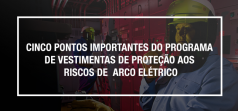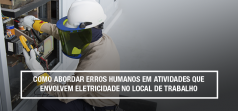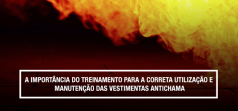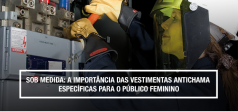Que tal considerar a implementação de vestimentas de proteção com tecidos mais leves,mais transpiráveis e inovadores em muitos aspectos?
Com certeza estas novas escolhas trariam muitos benefícios aos usuários no seu programa de segurança de uma forma geral.
Por está razão vamos sugerir esses cinco pontos para uma atualização constante do seu programa de segurança antichama. Read More










